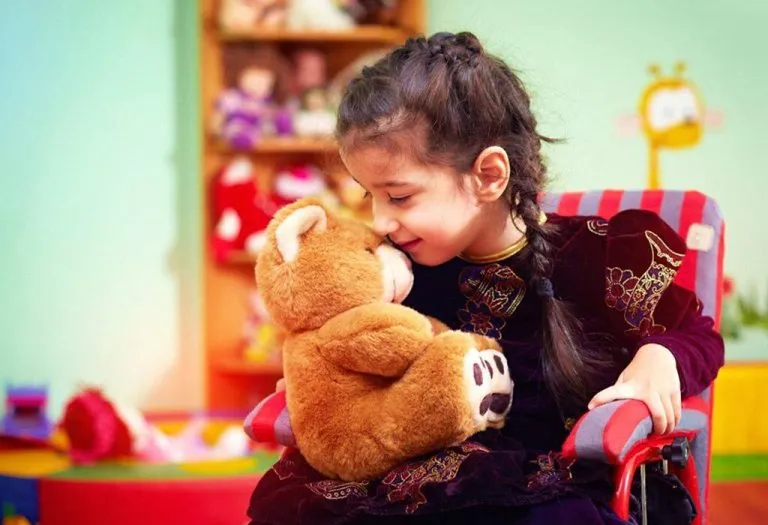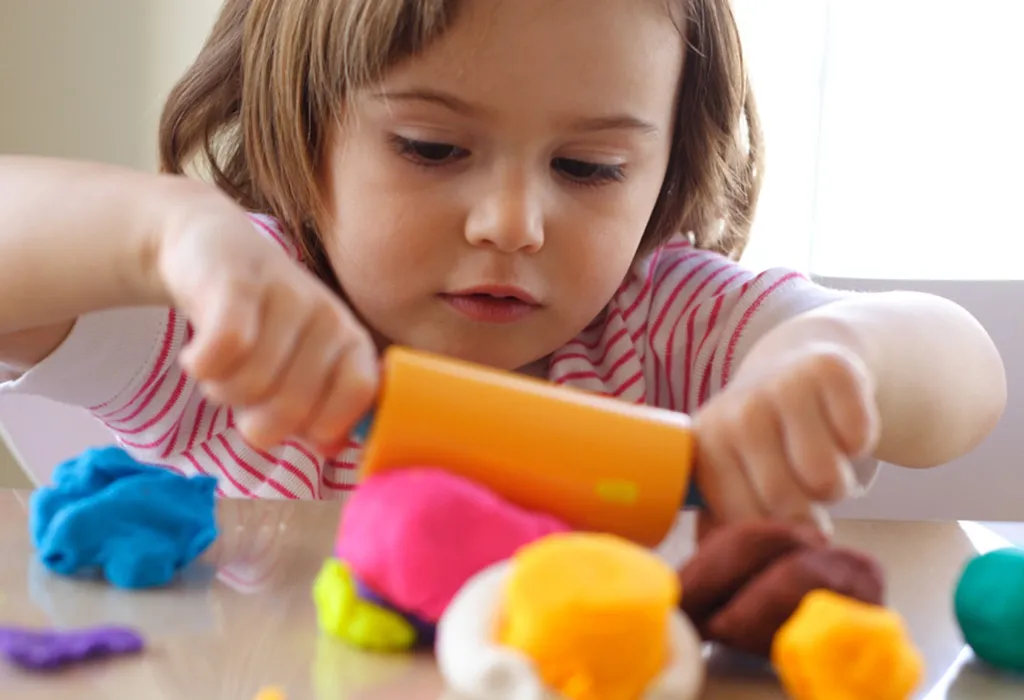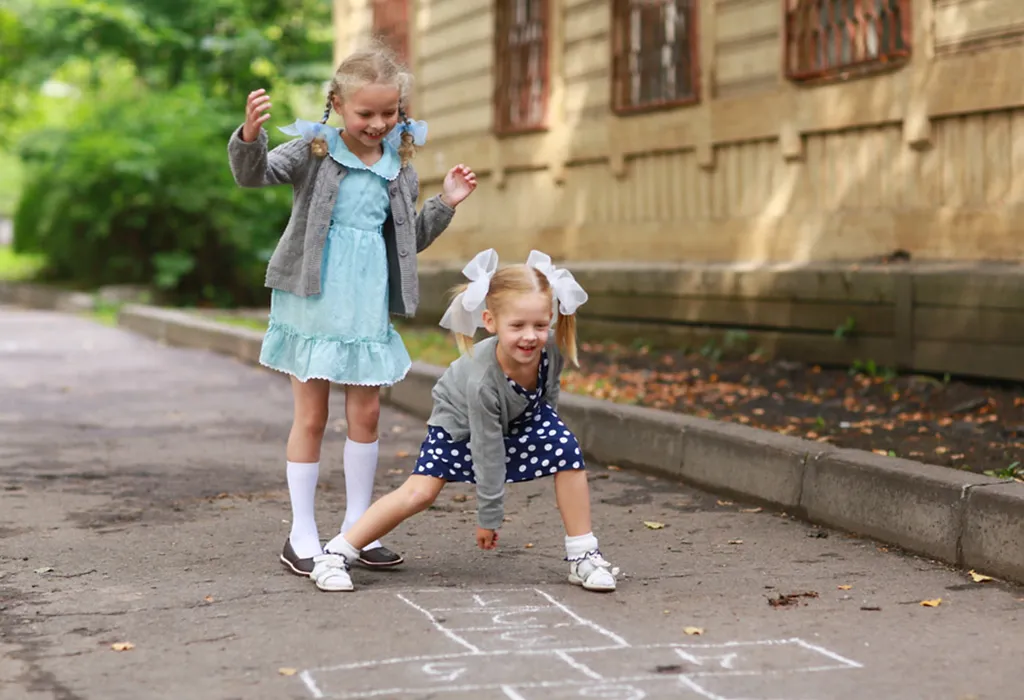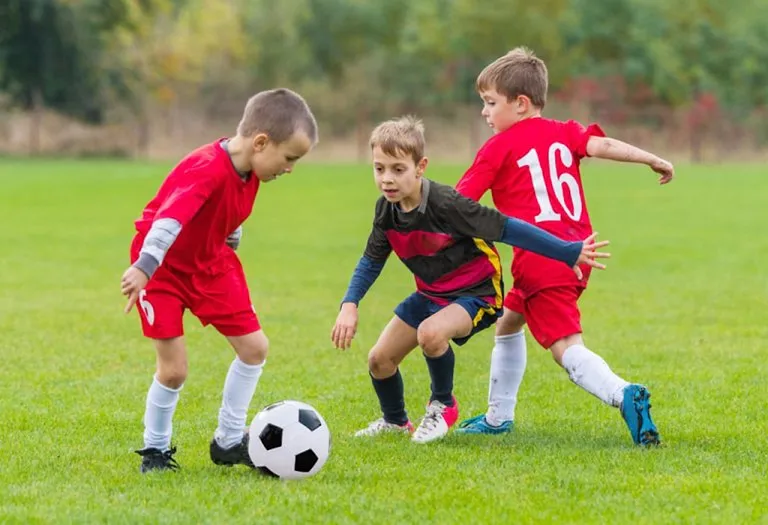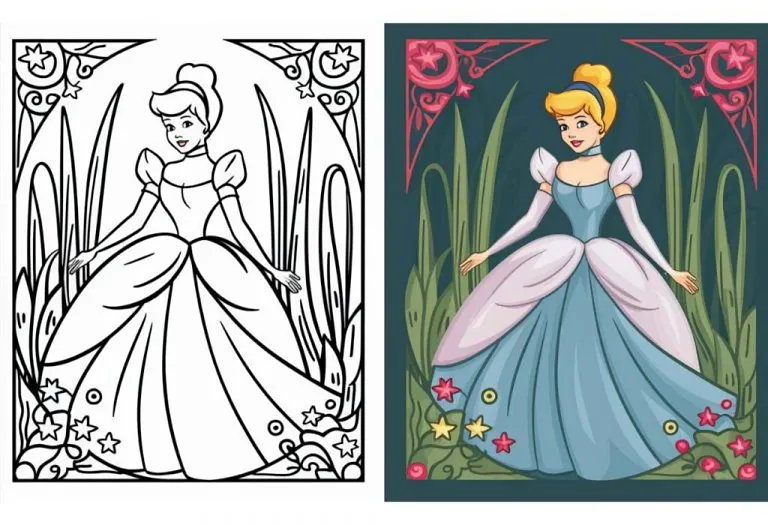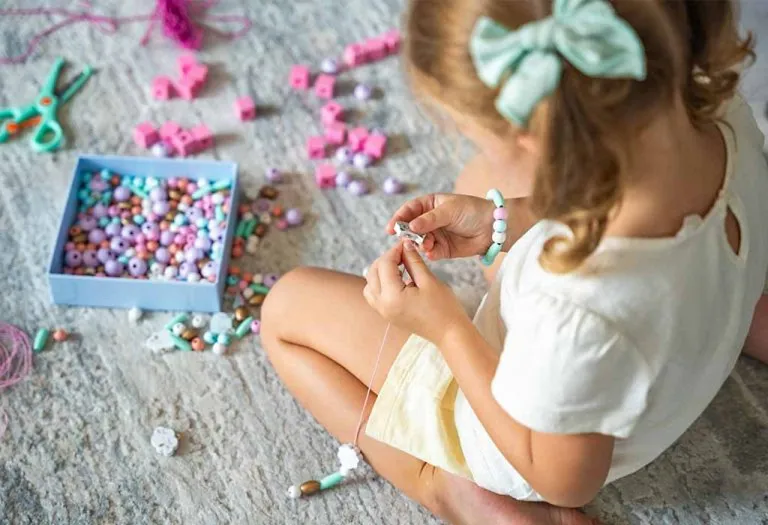Engaging Activities and Games for Autistic Children
Autism Spectrum Disorder (ASD) includes various neuro-behavioural conditions like ADHD, Asperger’s syndrome, Schizophrenia, Bipolar Disorder, and Intellectual disability. These issues can impact a child’s communication ability and cause social behaviour problems. Children experience differing severity levels; some may have high logical intelligence but lack emotional range, while others might struggle with basic tasks. Children with ASD are receptive to affection but often have greater emotional needs.
As a parent, helping your child with ASD develop confidence and become well-adjusted is crucial. They are less likely to learn through conventional education and prefer activities that stimulate their senses. Arts, crafts, and games can boost attention spans, interest, and expressiveness while calming them and reducing anxiety. These activities also help develop motor, language, and social skills. There are many fun activities and games for autistic kids. Some of them are described below.
Why Play Is Important for an Autistic Child
During playtime, children continually process new words, actions, and skills they’ve been taught or observed. Play acts as a rehearsal for both present and future life, helping children find their identity and navigate their emotions.
For children, play is serious learning, and this holds true for autistic children as well. Whether designing activities for autistic toddlers, preschoolers, or older kids, the benefits of play remain consistent. Playful activities for autistic kids teach social skills, inspire creativity, enhance learning and understanding, improve communication, and develop fine and gross motor skills.
Through play, many children discover hobbies and interests that can become lifelong passions or potential career paths. For autistic kids, play can be a key factor in forming friendships, transitioning from special education to general education settings, and adapting to various social environments.
Fun Activities for Autistic Children
Here are a few wonderful activities for kids with autism.
1. I-Spy Bottle
This is an easy activity that can sharpen your kid’s neurocognitive development and focus. The amazing colours, shapes, and sparkles make this game to play with autistic children interesting enough to hold the attention of easily distracted children.
What You Need
- An empty Jar or Bottle
- small shiny items like Sequins, Buttons, Beads and so on
- A Packet of Glitter
- Non-toxic paints
- Water
- Corn Syrup
- Alphabet Tiles
- Piece of Paper
How to Do It
- Start by telling your kid to write the letters of the alphabet on a piece of paper.
- Add all the solid objects in the above list into the jar, then fill it with half corn syrup and half water.
- Close the bottle with a lid and seal it shut with tape or glue.
- Shake well and give it to your child.
- Now they have to locate all the alphabet tiles in there, marking on the paper when they find each one.
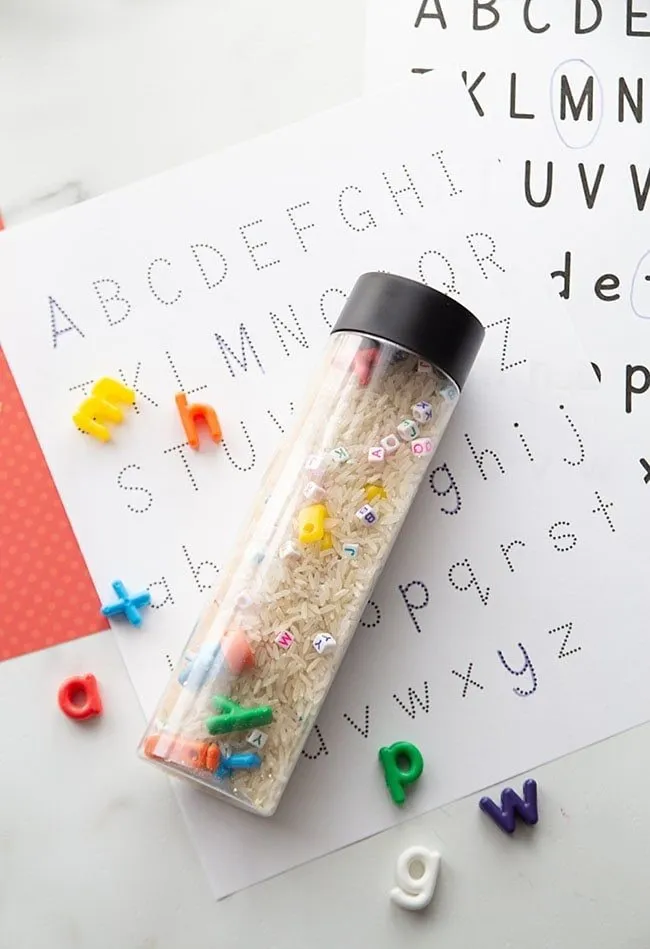
Source: Pinterest
2. Ice Cube Watercolour
This fun activity will challenge and captivate your kid. It aims to bolster their identification and differentiation skills, and consequently their proficiency at observational abilities as well as motor skills.
What You Need
- Ice tray
- Non-toxic paints
- Ice cream sticks
- A4 Paper
- Water
- Aluminium Foil
How to Do It
- Blend different paints in water and pour them into different sections of the ice tray.
- Put ice cream sticks in each section, using aluminium foil to hold them in place.
- After the ice cubes are formed, let your children use them to paint on pieces of paper.
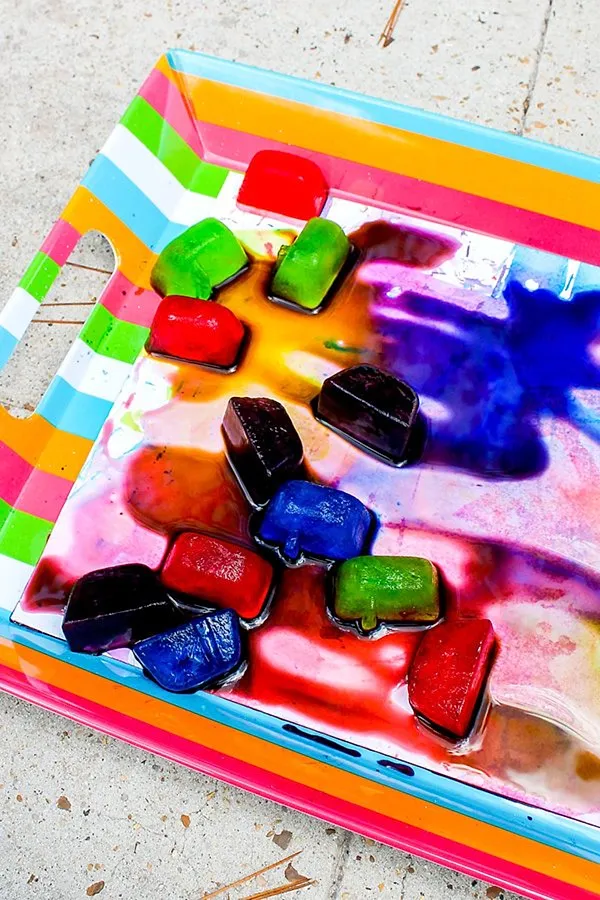
Source: Pinterest
3. Tactile Tray
This is a sensory activity for children with autism that can help them understand and integrate sensory experiences.
What You Need
- Tray
- Buttons
- Beads
- Paper Strips
- Uncooked Rice/Wheat/Dal
- Confetti
How to Do It
- Mix all the objects in a wide tray.
- Let your kid have fun just sifting, spilling, arranging them.
- You can increase the difficulty level by making sections in the tray that only contain one type of item, or sort them by colours, shapes, sizes, and so on.
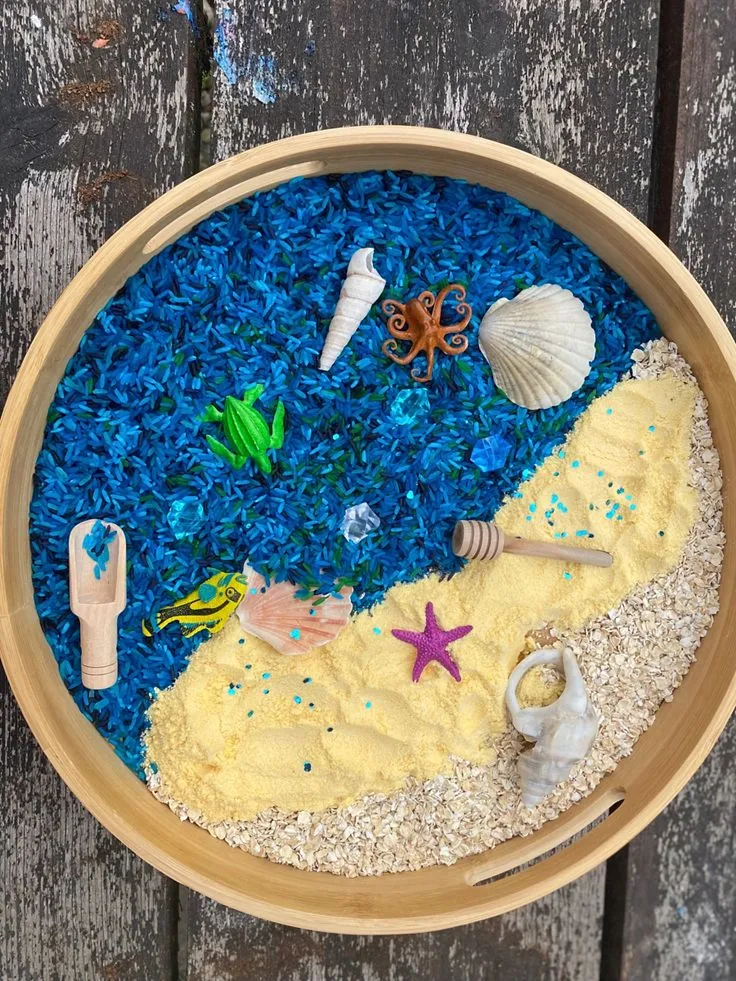
Source: Pinterest
4. Smell Zones
The smell is another important, yet neglected sensory experience.
What You Need
- Small Plastic Boxes
- Strips of Paper
- Different Aromas such as ginger, lemon, rose, and so on
- You can also use essential oils like jasmine, lemongrass, and lavender as they are relaxing.
Note: Please research the oils beforehand to ensure they are suitable for children. Children can be allergic to chemicals that may be present in these oils.
How to Do It
- Mix the aromatic substances into the strips of paper to impart the smell.
- Put the same fragrance on multiple strips.
- Mix all the strips together and ask your child to categorise them based on smell alone.
- They can then place the matching strips in individually labelled boxes and smell them whenever they want.
5. Clay Sculpting
A universal children’s activity, clay or plasticine moulding is an excellent way to enhance your kid’s motor skills, imagination and conception.
What You Need
- Sculpting Clay for Kids (several brands are available)
How to Do It
- Sit your kids down at a table or on the floor and give them the clay.
- The feeling of the clay changing shape as it is moved around will please them.
- You can also sit with them for a fun afternoon of creating little clay shapes.
- Joint activities like these are a great way to bond with kids with ASD, especially non-verbal ones.
6. Colourful Ice Mining
An enjoyable treasure hunt activity that can help with your children’s sensory integration and motor skills
What You Need
- Small Toys
- Sequins
- Bottle Caps
- Chickpeas
- Plastic Container
- Water
How to Do
- Pour water into the container until around a fifth of it is filled. Freeze it. Add assorted objects. Pour another fifth of water.
- Repeat this process to create your ice tower.
- Now your kids can find all the objects in the tower by making the ice melt using warm water, spoon, salt, etc.
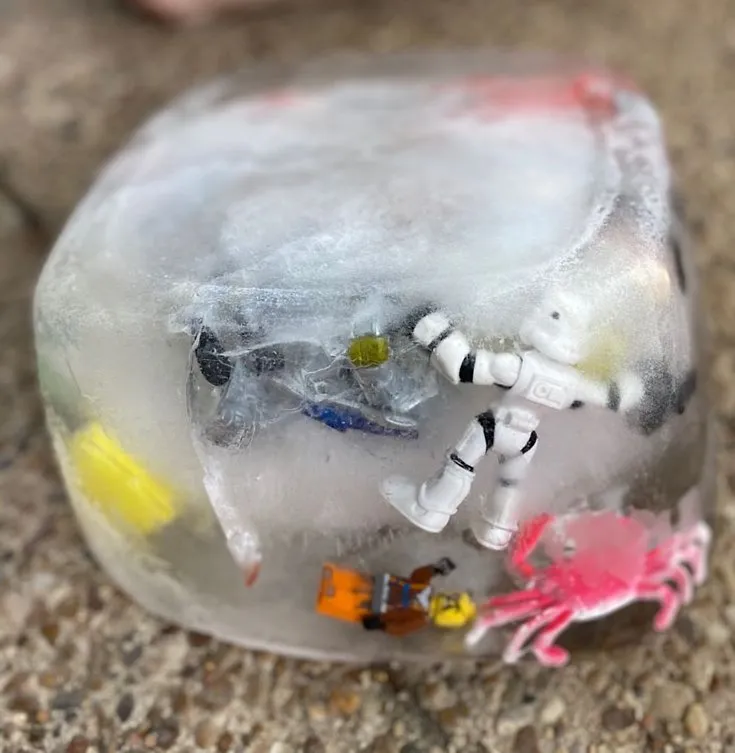
Source: Pinterest
7. Shape Making
This is an engrossing activity that introduces symmetry and shapes to young children with ASD.
What You Need
- Twenty ice cream sticks
- Different colour markers
How to Do It
- Keep two ice cream sticks next to one another, and ask your little one to draw a simple shape on both of them.
- The shape must be split in two when the sticks are separated.
- Let them draw as many shapes as they want, preferably simply geometric shapes.
- Then mix the sticks together and ask them to find the pairs that combine to give the right shape.
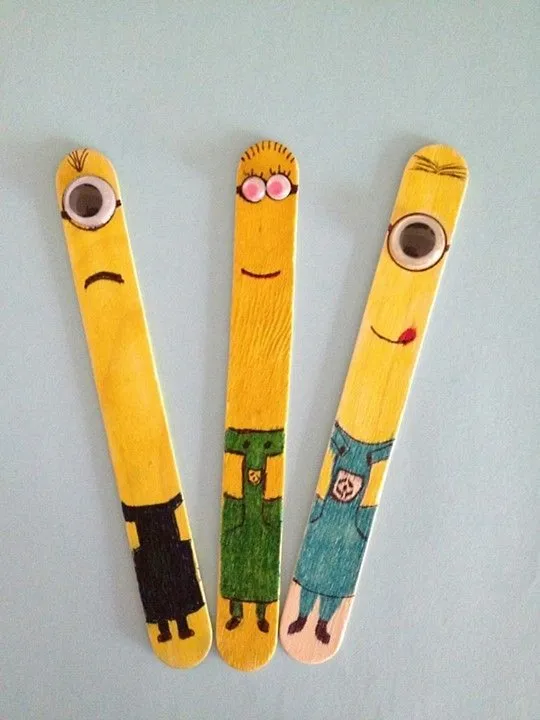
Source: Pinterest
8. Bubble Wrap Painting
A creative and sensory-rich activity that engages children and helps them develop fine motor skills.
What You Need
- Bubble wrap
- Washable paints
- Paintbrushes
- Paper
How to Do It
- Cut a piece of bubble wrap and tape it to a flat surface.
- Provide your child with various colors of washable paint and paintbrushes.
- Encourage them to paint the bubble wrap, then press a piece of paper onto the painted surface to create a print.
- This activity combines the sensory joy of bubble wrap with the creativity of painting.
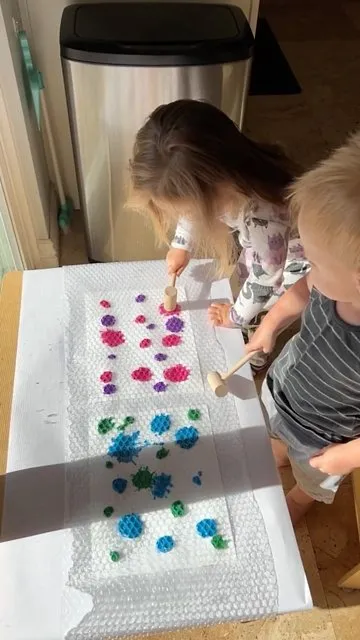
Source: Pinterest
9. Sensory Bottles
A calming and visually stimulating activity that helps children with sensory processing and focus.
What You Need
- Empty plastic bottles
- Water
- Glitter
- Food coloring
- Small objects like beads, sequins, or buttons
- Clear glue
How to Do It
- Fill the plastic bottles with a mixture of water and clear glue, then add glitter, food coloring, and small objects.
- Seal the bottle tightly with the cap and secure it with glue if necessary.
- Shake the bottle to mix the contents, creating a mesmerizing sensory experience.
- These bottles can be used as a calming tool for children when they need to relax.
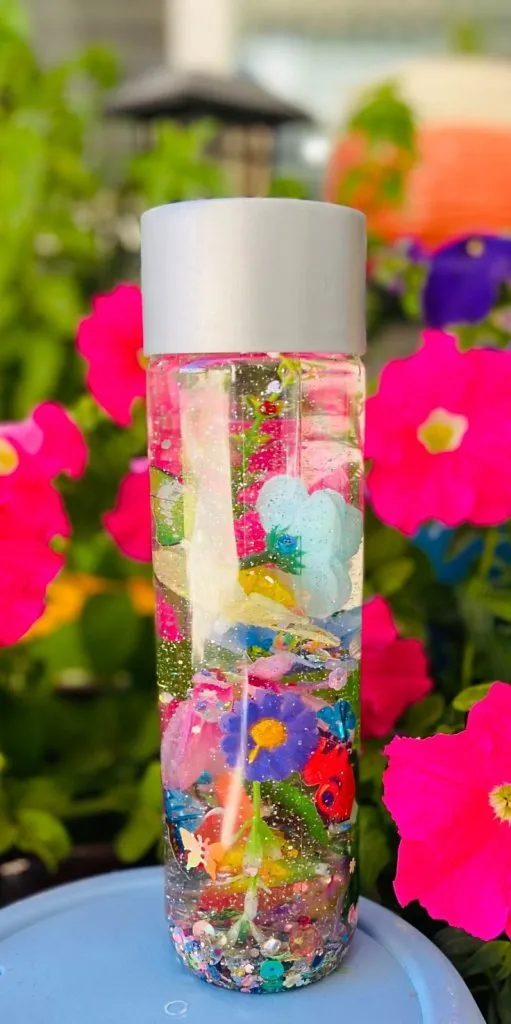
Source: Pinterest
Games for Kids With Autism
Here are some interesting games to play with kids with autism.
Indoor Games for Autistic Children
1. Sensory Detective
A touch-based game that will train your children to trust their sensory experiences and enhance their tactile abilities.
What You Need
- Beads
- Dried Beans
- Rice/Wheat/Dal
- Small Toys
- Bucket
How to Play
- Mix all the objects in a deep bucket.
- Make sure you bury all the toys well.
- Now ask your child to find all the toys in a particular order with their eyes closed and only by using their sense of touch.
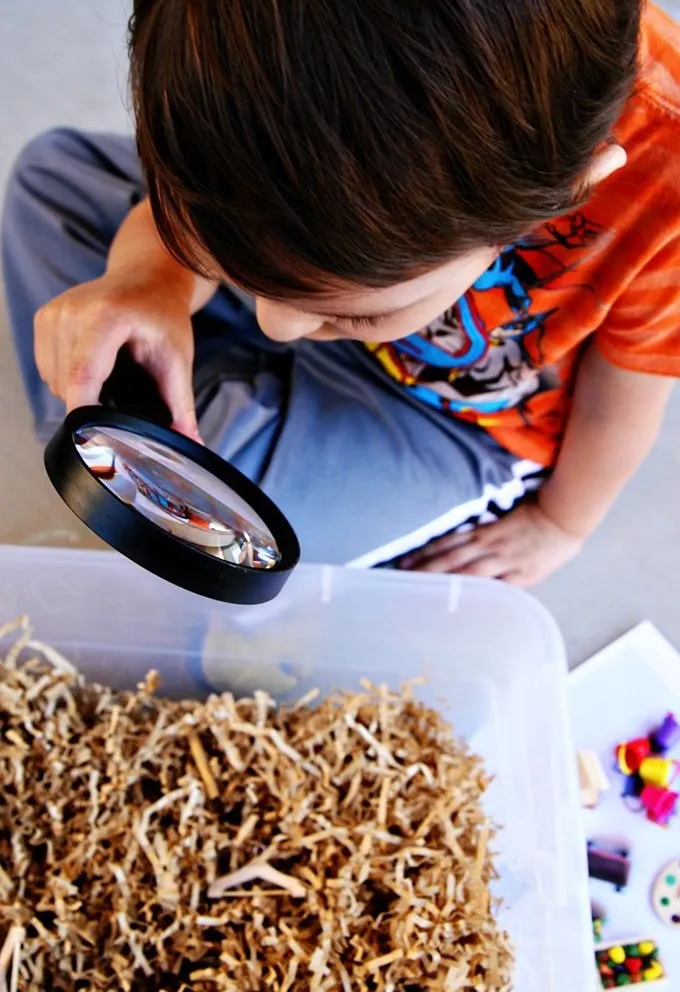
Source: Pinterest
2. Web Walking
This indoor activity for autistic children is great for keeping your kid with ASD busy while sharpening their balance, motor skills, and spelling ability.
What You Need
- A4 paper with single alphabets on them
- Painter’s tape
- Marker pen
- Pair of scissors
- Card stock
How to Play
- First write different words on the card stocks, such as animals, birds, places, family members, friends and so on.
- Then use the painter’s tape to create a spider web pattern on the floor.
- At each vertex on the web, place the piece of paper with a letter on it.
- Now read out the name on each card and ask your child to walk along with the spider web to the letters required to spell the word.
- The challenge is that they have to bend down and pick up letters in the right order without touching any wrong letters.
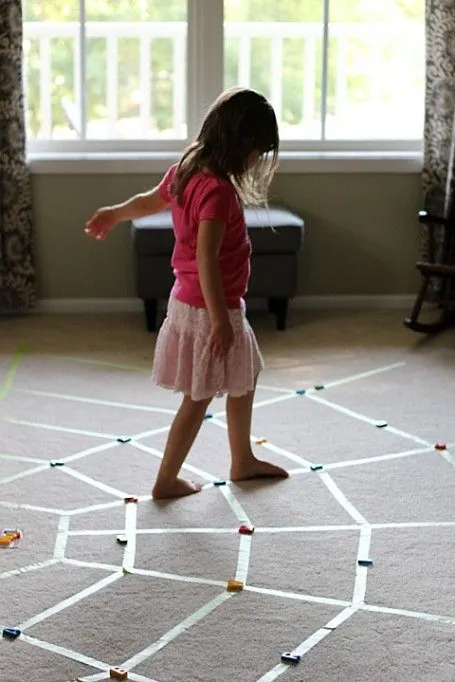
Source: Pinterest
3. Match the Card
This is a wonderful game that improves your child’s skills of picking up information and gathering knowledge. You can use it to complement their schoolwork.
What You Need
- Clothes Clips
- Different cards with pictures of flowers, fruits, letters, and so on
- Pieces of Paper
How to Play
- Write down the names of the pictures on each card on individual scraps of paper.
- Stick these scraps to different clothes clips.
- Now place a few cards on the table, and ask your kid to attach the clothes clips to the matching card.
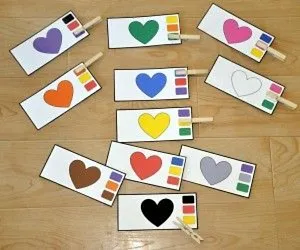
Source: Pinterest
4. Footprint Painting
This game will keep your kid busy while sharpening their balance and motor skills.
What You Need
- Large roll of paper
- Paints
- Paper towel
- Water
How to Play
- Make a circle or any other desired shape on the large sheet of paper.
- Now paint your child’s feet with their favourite colour and ask them to make footprints around it, or just let them go freeform.
Outdoor Games for Children With Autism
Going outdoors is always a great way to get some exercise and have some fun at the same time. The fresh air, the warmth of the sun and surrounding greenery all contribute to a fun experience.
1. Obstacle Course
A game that can be conjured up in minutes, it’s sure to push your kids to their limits (in a fun way)!
What You Need
- Nothing at all
How to Play
- Take your kid outside to a place they feel safe, maybe a backyard, garden or the nearby park.
- Tell them to run around objects like trees, benches or bushes, jump across puddles, turn around in place, walk a specific number of steps.
- It is up to your creative imagination to make it as complex or simple as you think your child can handle.
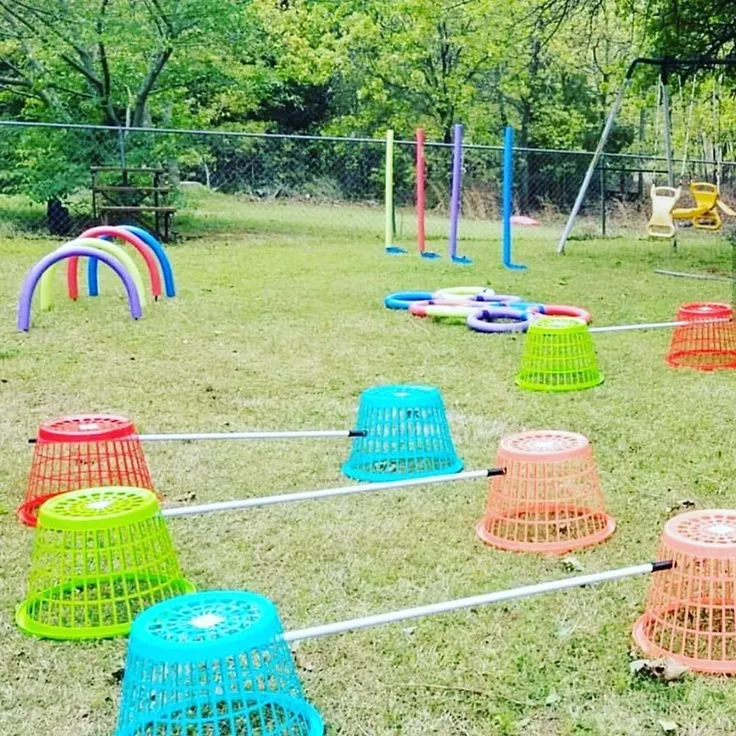
Source: Pinterest
2. Rain Dance
A rainy day may seem like a bad situation for most kids. However, you can make it fun by doing a fun activity such as dancing.
What You Need
- Sunscreen
- Umbrella
- Rubber shoes
How to Play
- It is a complete myth that getting wet in the rain makes one sick.
- Staying home all day in the rainy season gets really dull, especially for restless kids.
- The next time it rains, let them go out and play.
- You can give them an umbrella just in case.
- Rain dances are a sensory experience that they will certainly enjoy.
- However, don’t forget to apply sunscreen on any exposed skin and make sure you keep an eye on them at all times.
3. Hopscotch
Hopscotch is a time-honoured tradition that is played by children in most countries.
What You Need
- Chalk
- Small objects like stones
How to Play
- Use the chalk to draw a hopscotch pattern on the ground outside.
- Each participant can use a pebble or bottlecap to mark their place during the game.
- If you are unaware of how it is played, there are several reference websites to explain the game.
- This game is great for fine-tuning their physical abilities, motor skills and social interactions.
4. Follow the Leader
This game is one of the many group activities available for kids with autism.
What You Need
- A group of kids
How to Play
- The game starts with a selected leader, who stands in front of the others lined up behind them.
- The leader then does different movements like raising their hands, bending their knees or anything they want.
- The aim of the game is to mimic the leader’s movements exactly.
- If a child makes a mistake, they are out of the round.
- The next leader is the only kid left behind the leader.
- This game can help boost proprioception, motor skills and sociability.
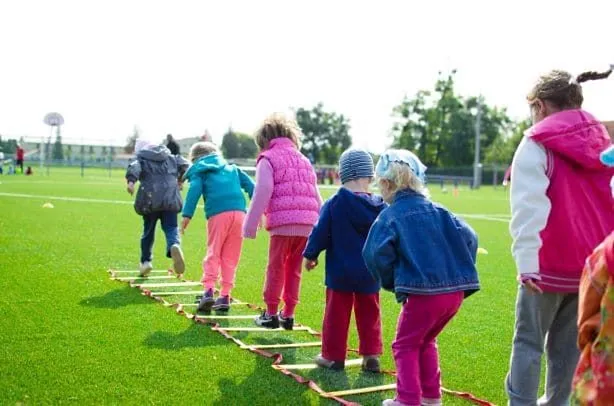
Source: Pinterest
5. Scavenger Hunt
Tickle their investigative skills by letting them find hidden treasures.
What You Need
- Chocolate bars
- Balloons
- Inexpensive toys
- A box of crayons
Note: You can tinker with this list and come up with your own treasure ideas as well.
How to Play
- Scatter these objects around your home garden or a children’s park.
- Give your child a list of all the objects you have hidden in the area.
- If your child is unable to read, give them a list of pictures.
- Ask them to search around and find all the objects mentioned in the list.
- Once found, they are to bring them to a designated area and sort them according to the types of objects.
- This will help them understand how to sort and categorise objects, giving them a sense of arrangement and order which they can sometimes lack.
How to Choose Activities for Autistic Children?
Choosing activities for autistic children involves considering their unique needs and preferences to ensure they are both engaging and beneficial. Here are some tips to guide you in selecting the best activities:
1. Focus on Sensory Preferences
Autistic children often have unique sensory preferences. Some may seek out sensory stimulation, while others might be sensitive to certain sensory inputs. Choose activities that cater to their sensory needs, whether it’s through tactile, auditory, or visual experiences. For example, sensory bins or water play can be calming for children who seek tactile input.
2. Encourage Social Interaction
Select activities that promote social skills and interaction with others. Cooperative games, group activities, and role-playing scenarios can help autistic children practice communication and socialization in a structured and supportive environment. Simple games that require turn-taking or collaborative projects like building with blocks are great options.
3. Tailor to Interests
Pay attention to your child’s interests and use them as a basis for selecting activities. If your child loves trains, for example, incorporate train-themed games or building sets into playtime. Engaging in activities that align with their interests can motivate them and make the learning experience more enjoyable.
4. Support Motor Skill Development
Choose activities that help develop both fine and gross motor skills. Activities like clay sculpting, drawing, or threading beads can enhance fine motor skills, while jumping, running, or obstacle courses can improve gross motor skills. Providing a balance of activities that target different motor skills can contribute to overall physical development.
5. Promote Creativity and Imagination
Encourage creative and imaginative play through activities like arts and crafts, storytelling, or pretend play. These activities can help autistic children express themselves, develop problem-solving skills, and enhance cognitive abilities. Allow them to explore different materials and create freely without rigid instructions to foster their creativity.
FAQs
1. How can I incorporate technology into play activities for autistic children?
Technology can be a valuable tool in engaging autistic children. Consider using apps designed for autism that focus on communication, social skills, or cognitive development. Interactive games on tablets or computers that offer sensory feedback and educational content can be both fun and beneficial. Always ensure the content is age-appropriate and aligns with your child’s interests and needs.
2. What are some tips for managing sensory overload during activities?
Sensory overload can be challenging for autistic children, especially during stimulating activities. Reduce noise, bright lights, and distractions to create a sensory-friendly environment. Offer sensory breaks or quiet spaces where children can retreat if overwhelmed. Use sensory tools like fidget toys, weighted blankets, or noise-cancelling headphones to help regulate sensory input. Observe your child’s cues and adjust the environment or activity to promote comfort and engagement.
Children are inquisitive and fascinated by everything they see around them. However, kids with ASD are often unable to communicate their interests or excitement to you. Therefore, coming up with the right activities to stimulate their minds might require some creative thinking. Further, every child with ASD is unique and can be affected by different things. The key is to understand your child, figure out their moods, and use the information to build the appropriate game or activity for them. The activities and games mentioned here are by no means a comprehensive list. You can conjure anything you think that can entertain your kid while still promoting their skill development. Having a child with ASD can be taxing but helping them learn to adjust to society is paramount.
References/Resources:
1. Autism Spectrum Disorder; Cleveland Clinic; https://my.clevelandclinic.org/health/diseases/8855-autism
2. Sensory grounding: A coping technique for children with anxiety; Children’s Hospital New Orleans; https://www.chnola.org/news-blog/2020/july/sensory-grounding-a-coping-technique-for-childre/
3. Edelson. S; Learning Styles & Autism; Autism Research Institute; https://autism.org/learning-styles-autism/
4. Autism Factsheet (for Schools); Nemours Kids Health; https://kidshealth.org/en/parents/autism-factsheet.html
5. Elbeltagi. R, Al-Beltagi. M, Saeed. N, Alhawamdeh. R; Play therapy in children with autism: Its role, implications, and limitations (World Journal of Clinical Pediatrics); National Library of Medicine; https://www.ncbi.nlm.nih.gov/pmc/articles/PMC9850869/; January 2023
6. Teaching Game Playing to Children With Autism; Teaching Game Playing to Children With Autism; https://asatonline.org/research-treatment/clinical-corner/teaching-game-playing/
7. Khatab. S, Hijab. M, Othman. A, Al-Thani. D; Collaborative play for autistic children: A systematic literature review (Entertainment Computing); Science Direct; https://www.sciencedirect.com/science/article/pii/S1875952124000211; May 2024
Also Read:
Diet for Autistic Children
Excellent Books for Children with Autism
Tips for Parenting a Child with Autism
Different Types of Autism Spectrum Disorders
Schooling for Children with Autism Spectrum Disorder
Was This Article Helpful?
Parenting is a huge responsibility, for you as a caregiver, but also for us as a parenting content platform. We understand that and take our responsibility of creating credible content seriously. FirstCry Parenting articles are written and published only after extensive research using factually sound references to deliver quality content that is accurate, validated by experts, and completely reliable. To understand how we go about creating content that is credible, read our editorial policy here.





